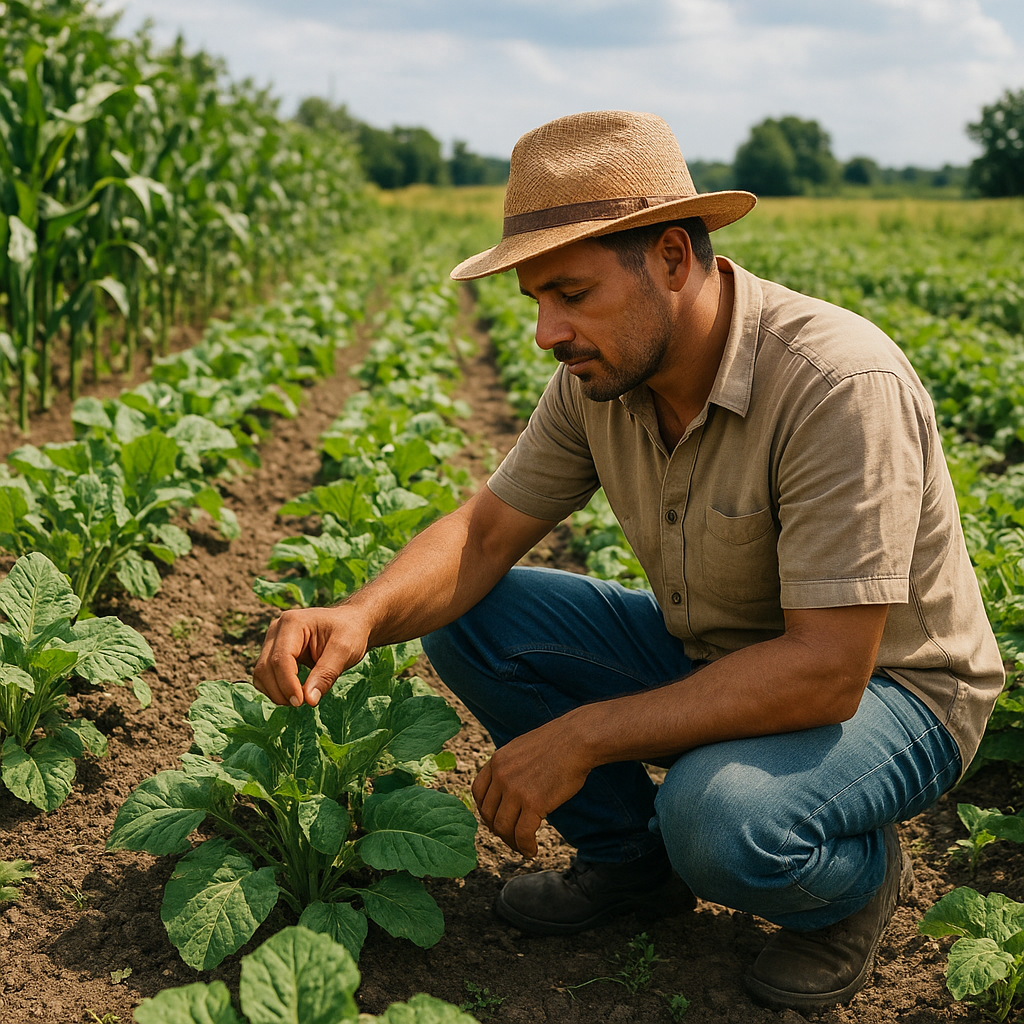
Enhancing biodiversity on farms is a crucial step towards sustainable agriculture and environmental conservation. Biodiversity not only supports ecosystem services but also contributes to the resilience and productivity of agricultural systems. This article explores the best ways to improve farm biodiversity, offering practical strategies and insights for farmers and land managers.
Understanding Farm Biodiversity
Farm biodiversity refers to the variety of life forms within agricultural systems, including crops, livestock, soil organisms, and the surrounding natural habitats. It encompasses both the genetic diversity within species and the diversity of species within ecosystems. Biodiversity is essential for maintaining ecosystem functions such as pollination, pest control, nutrient cycling, and soil fertility.
One of the primary benefits of farm biodiversity is its role in enhancing ecosystem resilience. Diverse ecosystems are better equipped to withstand environmental stresses such as climate change, pests, and diseases. By fostering a variety of species, farmers can create a more stable and productive agricultural environment.
The Importance of Genetic Diversity
Genetic diversity within crops and livestock is a critical component of farm biodiversity. It provides the raw material for adaptation and evolution, allowing species to cope with changing environmental conditions. Farmers can enhance genetic diversity by planting a variety of crop species and using traditional or heirloom varieties that are well-suited to local conditions.
In livestock farming, maintaining diverse breeds can help ensure resilience against diseases and changing climates. Breeds that are adapted to specific environments can offer advantages in terms of productivity and sustainability. By preserving and utilizing a wide range of genetic resources, farmers can reduce their reliance on external inputs and increase the sustainability of their operations.
Strategies for Enhancing Biodiversity on Farms
Improving farm biodiversity requires a multifaceted approach that integrates ecological principles into agricultural practices. Here are some effective strategies for enhancing biodiversity on farms:
Agroforestry and Silvopasture
Agroforestry involves integrating trees and shrubs into agricultural landscapes, providing multiple benefits such as improved soil health, increased carbon sequestration, and enhanced habitat for wildlife. Silvopasture, a form of agroforestry, combines trees with pastureland, offering shade and shelter for livestock while promoting biodiversity.
By incorporating trees into farming systems, farmers can create diverse habitats that support a wide range of species. Trees can also act as windbreaks, reduce soil erosion, and improve water retention, contributing to the overall health of the farm ecosystem.
Cover Cropping and Crop Rotation
Cover cropping involves planting non-cash crops during the off-season to protect and enrich the soil. These crops can suppress weeds, improve soil structure, and provide habitat for beneficial insects. By rotating crops, farmers can break pest and disease cycles, reduce soil degradation, and enhance soil fertility.
Crop rotation and cover cropping are effective ways to increase plant diversity on farms, promoting a balanced ecosystem that supports a variety of organisms. These practices can also reduce the need for chemical inputs, leading to more sustainable and environmentally friendly farming systems.
Creating Wildlife Habitats
Establishing wildlife habitats on farms can significantly enhance biodiversity. This can be achieved by setting aside areas for native vegetation, creating buffer zones along waterways, and installing hedgerows or shelterbelts. These habitats provide food, shelter, and breeding sites for a range of species, including pollinators and natural pest predators.
By fostering a diverse array of habitats, farmers can support a rich tapestry of life that contributes to the ecological balance of the farm. This approach not only benefits wildlife but also enhances the aesthetic and recreational value of the landscape.
Challenges and Considerations
While enhancing farm biodiversity offers numerous benefits, it also presents challenges that need to be addressed. Farmers must balance the demands of production with the need to conserve biodiversity, often requiring changes in management practices and investment in new technologies.
Economic Considerations
One of the primary challenges in promoting biodiversity is the economic impact on farmers. Transitioning to more diverse farming systems may require initial investments in infrastructure, training, and resources. However, the long-term benefits of increased resilience, reduced input costs, and improved ecosystem services can outweigh these initial costs.
Farmers can explore opportunities for financial support through government programs, grants, and incentives that promote sustainable agriculture and biodiversity conservation. By leveraging these resources, farmers can mitigate the economic challenges associated with enhancing biodiversity.
Knowledge and Education
Another challenge is the need for knowledge and education about biodiversity-friendly practices. Farmers may require training and support to implement new techniques and understand the ecological principles underlying biodiversity conservation. Extension services, agricultural organizations, and research institutions can play a vital role in providing this support.
By fostering a culture of learning and innovation, the agricultural community can develop and share best practices for enhancing biodiversity. Collaborative efforts among farmers, researchers, and policymakers can drive the adoption of sustainable practices and contribute to the overall health of agricultural ecosystems.
Conclusion
Improving farm biodiversity is a vital component of sustainable agriculture, offering benefits for both the environment and agricultural productivity. By adopting strategies such as agroforestry, cover cropping, and wildlife habitat creation, farmers can enhance the resilience and sustainability of their operations.
While challenges exist, the long-term benefits of increased biodiversity make it a worthwhile investment for the future of farming. Through education, collaboration, and support, the agricultural community can work towards a more diverse and sustainable future, ensuring the health and vitality of our ecosystems for generations to come.

